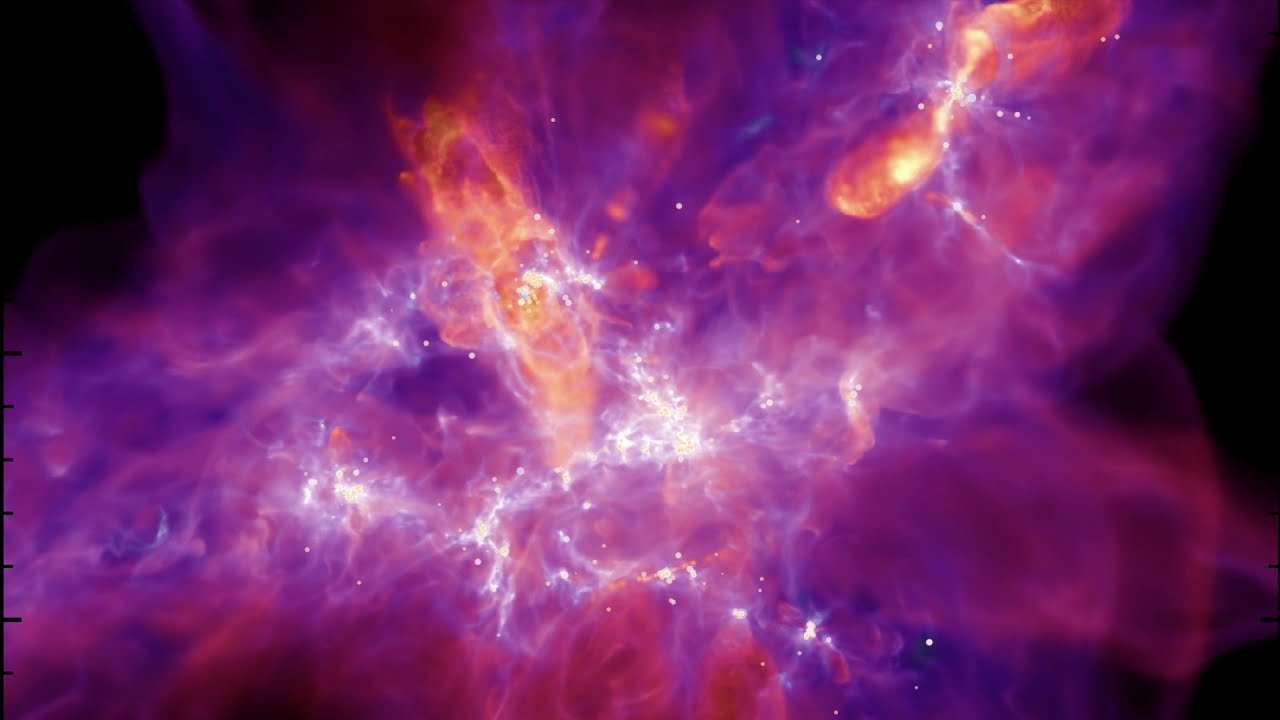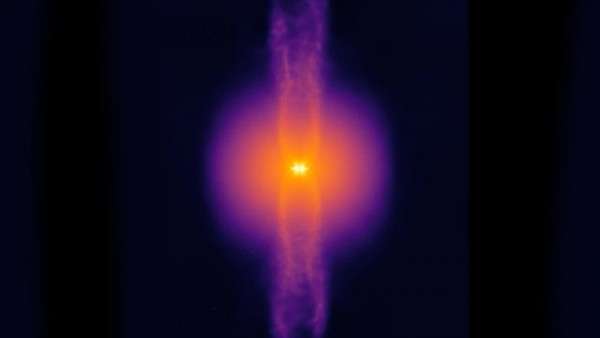Create a free profile to get unlimited access to exclusive videos, sweepstakes, and more!
Witness the wonders of star formation in this incredibly detailed 3D simulation

As the old song goes, would you like to swing on a star and carry moonbeams home in a jar?
Well, those moonbeams might have to wait but you can still immerse yourself in the violent yet beautiful formation of stars thanks to the most detailed 3D simulation ever created. Conjured up by curious researchers at Northwestern University, this high-resolution model depicting a churning gas cloud transforming into a stellar mass is both inspiring and realistic.
The team, which includes Northwestern University astrophysicists, devised the mathematically driven sequence that lets stargazers drift around a cosmic nursery as shining stars begin to appear. STARFORGE (Star Formation in Gaseous Environments) is the computational foundation with which this gas cloud simulation is able to render the stirring episode, a heavenly event that’s 100 times bigger than previous attempts and replete with vivid colors.
“People have been simulating star formation for a couple decades now, but STARFORGE is a quantum leap in technology,” explained lead author Michael Grudić, a postdoctoral fellow at Northwestern’s Center for Interdisciplinary Exploration and Research in Astrophysics, in a post on Northwestern Now. “Other models have only been able to simulate a tiny patch of the cloud where stars form — not the entire cloud in high resolution. Without seeing the big picture, we miss a lot of factors that might influence the star’s outcome.”
Recently accepted by the Monthly Notices of the Royal Astronomical Society, full details of Northwestern’s research and how the model was accomplished arrived online last week.
This mesmerizing simulation also serves as the first 3D animation to simultaneously model star formation, evolution, and dynamics while factoring in stellar feedback like jets, radiation, wind, and neighboring supernovae activity. It allows researchers to examine probing questions such as why star formation is so slow and inefficient, what elements ultimately determine star mass, and why stars normally form in clusters.
“How stars form is very much a central question in astrophysics,” said senior author Claude-André Faucher-Giguère, an associate professor of physics and astronomy at Northwestern’s Weinberg College of Arts and Sciences, in Northwestern Now. “It’s been a very challenging question to explore because of the range of physical processes involved. This new simulation will help us directly address fundamental questions we could not definitively answer before.”
Star formation isn’t ever rushed and takes tens of millions of years from inception to formation, so astronomers normally observe these growing pains as a static snapshot frozen in time.
STARFORGE incorporates computational code for a multitude of physics phenomena, including gas dynamics, magnetic fields, gravity, heating and cooling, and progressive stellar feedback. A single simulation takes three months to run, requiring the efforts of one of the most powerful supercomputers on the planet. This special facility is supported by the National Science Foundation and operated by the Texas Advanced Computing Center.
“Understanding galaxy formation hinges on assumptions about star formation,” Grudić added. “If we can understand star formation, then we can understand galaxy formation. And by understanding galaxy formation, we can understand more about what the universe is made of. Understanding where we come from and how we’re situated in the universe ultimately hinges on understanding the origins of stars.”















